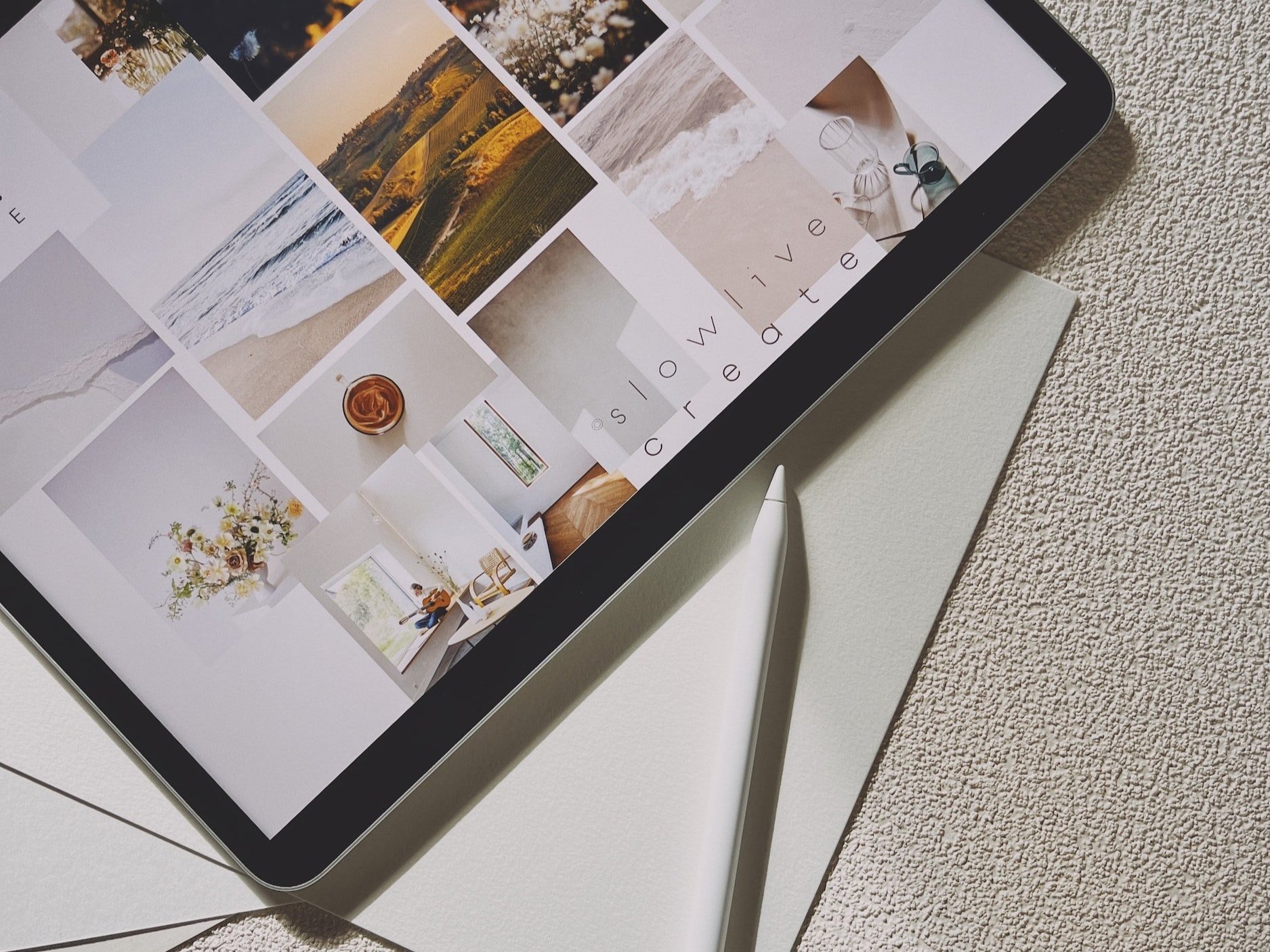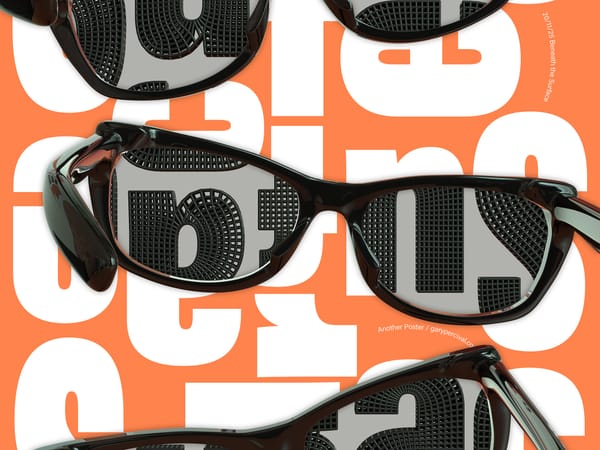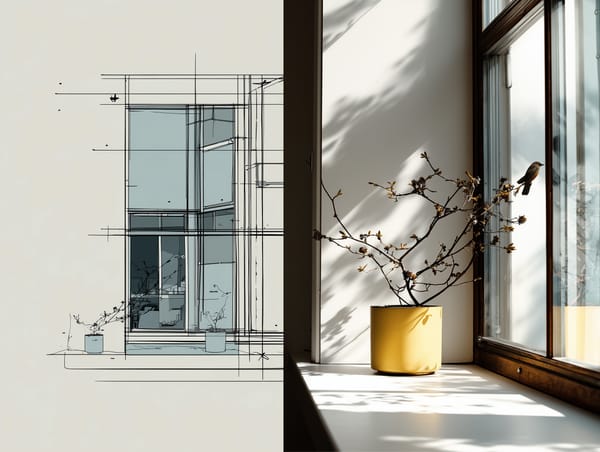How to sell your design vision to clients
Do you feel like you have a great design vision but clients just don't get it?

Do you feel like you have a great design vision but clients just don't get it?
It can be frustrating when your amazing ideas are met with blank stares or requests for something more "traditional."
In this post, I'll share some tips on how to sell your design vision and make sure that your hard work is seen and appreciated.
Whether you're a student looking to start your freelance career or a seasoned pro, these tips will help you communicate your ideas in a way that clients will understand. Let's get started!
Establish yourself as an expert in your field
Freelance graphic design is a competitive industry, and to set yourself apart from the competition, you need to establish yourself as an expert in your field.
This means being an expert in your craft, but it also means knowing your client’s business inside and out. When you can show that you understand their business and their needs, you’ll be in a better position to sell them on your design vision.
Develop a design style that is unique to you
Developing a personal design style is one of the most important things freelance graphic designers can do to set themselves apart from the competition. It not only makes you more recognisable, but it also helps clients know what they can expect from your work.
But how do you go about developing your own unique style?
One way is to study the work of other designers whose styles appeal to you. Another is to experiment with different mediums and techniques until you find ones that feel comfortable and natural for you. And finally, don’t be afraid to take risks—sometimes the best ideas are the ones that push boundaries and challenge conventions.
Once you’ve developed a strong personal style, the next step is to start selling your vision to clients. This can be done in a number of ways, but one of the most effective is to create a portfolio that showcases your work in the best possible light. Make sure to include both finished projects and rough concepts, as this will give potential clients a sense of your range and ability.
And finally, don’t forget to market yourself! Get your name out there by networking with other professionals, attending industry events, and submitting your work to relevant publications. The more exposure you have, the easier it will be to sell your design vision to clients.

Understand your client's needs and wants
As a freelance graphic designer, it is important to understand your client's needs and wants in order to create designs that meet their expectations.
Often, clients will have a specific vision in mind for their project, and it is up to the designer to help them realise that vision. In order to do this, you must first understand what the client is hoping to achieve with their design.
Some clients may simply want a new logo or branding for their business. Others may need a complete overhaul of their website or marketing materials.
It is important to ask questions and get as much information as possible from the client in order to understand their specific needs. Once you have a clear understanding of what the client wants, you can begin to create designs that reflect their vision.
It is also important to be flexible and willing to make changes as needed. The client's needs may change as the project progresses, and it is up to the designer to adapt accordingly.
By understanding your client's needs and wants, you can create designs that exceed their expectations and help them achieve their desired results.

Anticipate client concerns and objections
When selling your design vision to clients, it's important to be prepared for any potential concerns or objections they may have. By anticipating these concerns, you can address them head-on and reassure the client that you're the right designer for the job.
Some common objections clients may have include:
- The project is too expensive.
- The project will take too long.
- The design isn't what they were expecting.
It's important to be able to answer these objections convincingly and show the client that you're confident in your abilities.
Some tips for selling your design vision to clients:
- Stressing the benefits of your design vision.
- Highlighting your previous experience and successes.
- Being prepared to answer any objections the client may have.
- Remaining confident in your abilities.
Create a mood board to help communicate your vision
Although I don't use this method myself, many designers do and it is a very popular one. A mood board is an excellent tool for communicating your design vision to clients.
It can help them understand the look and feel you want to achieve, as well as give them a better idea of what the finished product will look like. It's also a fun way to be creative and showcase your talent!
Begin by gathering inspiration from sources such as magazines, websites, and Pinterest. Then, make a collage of images that reflect the overall look you want to achieve. Include images in both colour and black-and-white, as well as a variety of textures and patterns.
Finally, include some words or phrases that express the mood of your mood board.
Here are some pointers on how to make an effective mood board:
- Keep things simple. Excessive information can be overwhelming.
- Concentrate on a single main theme or idea.
- Combine visual elements such as photos, illustrations, and typography.
- Colour can be used to convey mood and emotion.
- Consider the overall tone and feeling you want to convey.
You'll be able to clearly communicate your vision to clients and get them excited about your project if you have a mood board.

Prepare to respond to questions about your design process
As a freelance graphic designer, you may be required to sell your design vision to clients on a regular basis. This includes answering any questions they may have about your process and explaining the reasoning behind your decisions.
Being prepared for these conversations will help you succeed and give the client confidence in your abilities.
Here are some questions about your graphic design process that you may be asked:
- How do you go about designing?
- How do you get started on a new project?
- How do you generate design ideas?
- How do you determine when a design is complete?
- What if the client is unhappy with the finished product?
Answering these questions honestly and openly will provide the client with a better understanding of your process and increase their confidence in your abilities.
It's also critical to be ready to answer any follow-up questions they might have. If you are unsure about something, don't be afraid to ask for clarification or more information.
The better prepared you are, the more easily the conversation will flow.

Have a realistic timeline for the project and stick to it
Graphic designers should always have a realistic timeline for their projects and should stick to that timeline as much as possible. This will help keep both the designer and the client on track and avoid any misunderstandings.
It's also important to be upfront with the client about the timeline from the beginning so there are no surprises down the road.
Present your ideas clearly and concisely
When presenting your design ideas to clients, it is important to be clear and concise in your explanations. This will help the client understand your vision and make decisions accordingly.
You should be able to clearly explain the purpose of each element in your design, as well as how it will benefit the client's business. It is also important to be able to answer any questions the client may have.
By being clear and concise, you can ensure that your ideas are understood and well received by the client.
Use rough mockups or sketches to help clients understand your vision
Freelance graphic designers often use rough mockups or sketches to help clients understand their vision for a project. This can be especially helpful when there are specific elements that the designer wants to highlight or when the client has specific requests or concerns.
Having a physical representation of the design can help the client understand how the final product will look, and it can also give them a sense of how much work is involved in bringing the design to life.
By seeing the designer's thought process and preliminary ideas, clients can better assess whether they're happy with the direction of the project and provide feedback that can help steer it in the right direction.

Be open to feedback
Be open to feedback after you've presented your ideas to the client. This is an important part of the design process because it allows the client to provide feedback and direction on what they want to see in the final product.
It is critical to listen to the client's feedback and, if possible, incorporate it into your design. However, if you are passionate about your original vision, you should be prepared to defend it.
The client should make the final decision, but your input can help them make an informed decision.
Be prepared to make compromises
When it comes to their design vision, freelance graphic designers are frequently asked to make compromises. This could be because of client preferences, financial constraints, or other factors.
However, keep in mind that freelance graphic design is a business, and as such, you must be willing to compromise in order to maintain good working relationships with clients and secure future work opportunities.
After the project is completed, follow up with the clients
Freelance graphic designers need to be sure to follow up with their clients after the project is completed. This can include sending a thank-you note or perhaps even providing a survey to get feedback on the project.
It's important to make sure clients are happy with the work that was done and that any issues or concerns were addressed. Following up also allows freelance graphic designers to ask for referrals or future work opportunities.
To be successful as a designer, you need to be able to sell your vision to clients. This involves understanding their needs and wants, and then translating those into a design that meets those requirements.
It also requires effective communication and presentation skills so that the client can see how the design will fit into their overall business strategy.
I hope these tips have been helpful in showing you what it takes to be a successful designer. Are there any other techniques that have worked for you in selling your designs? Let me know in the comments below!



